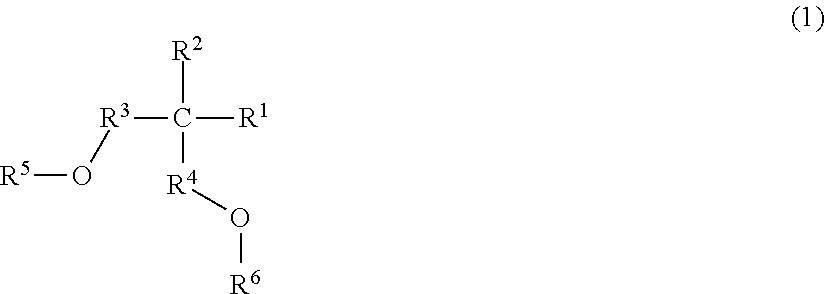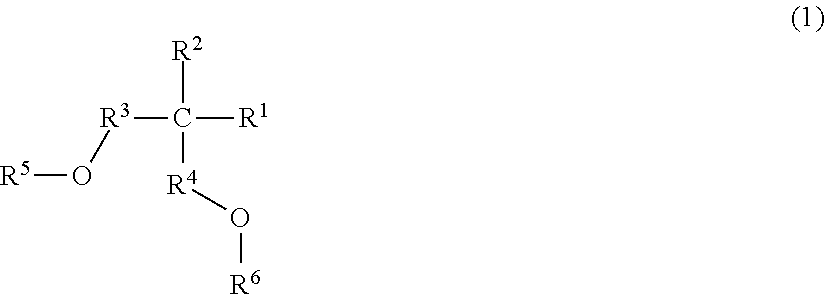Coating agent for reducing roughness of resist pattern, and method for forming resist pattern in which roughness is reduced
- Summary
- Abstract
- Description
- Claims
- Application Information
AI Technical Summary
Benefits of technology
Problems solved by technology
Method used
Image
Examples
Example
Example 1, Comparative Examples 1 and 2
[0113]2.19 parts by mass of polyvinylpyrrolidone (K30, manufactured by Nippon Shokubai Co., Ltd.) as a water-soluble polymer, 0.13 parts by mass of an additive compound that is a type disclosed in Table 1, and 0.18 parts by mass of benzyltrimethylammonium hydroxide as a basic compound were dissolved in ion-exchanged distilled water (97.5 parts by mass) to prepare a coating agent.
[0114]In Example 1, Compound 1 represented by the following formula was used as additive compound.
(In the above formula, the sum of q and r represents 4 as the average addition numbers of ethylene oxide.) In Comparative Examples 1 and 2, the following Comparative
[0115]Compounds 1 and 2 were used as the additive compound. Comparative Compound 1: a compound represented by the following formula:
(In the above formula, —C12H25 represents an n-dodecyl group, and the sum of a and b represents 13 on average.) Comparative Compound 2: a compound represented by the following formu...
PUM
| Property | Measurement | Unit |
|---|---|---|
| Nanoscale particle size | aaaaa | aaaaa |
| Nanoscale particle size | aaaaa | aaaaa |
| Nanoscale particle size | aaaaa | aaaaa |
Abstract
Description
Claims
Application Information
 Login to View More
Login to View More - R&D
- Intellectual Property
- Life Sciences
- Materials
- Tech Scout
- Unparalleled Data Quality
- Higher Quality Content
- 60% Fewer Hallucinations
Browse by: Latest US Patents, China's latest patents, Technical Efficacy Thesaurus, Application Domain, Technology Topic, Popular Technical Reports.
© 2025 PatSnap. All rights reserved.Legal|Privacy policy|Modern Slavery Act Transparency Statement|Sitemap|About US| Contact US: help@patsnap.com



